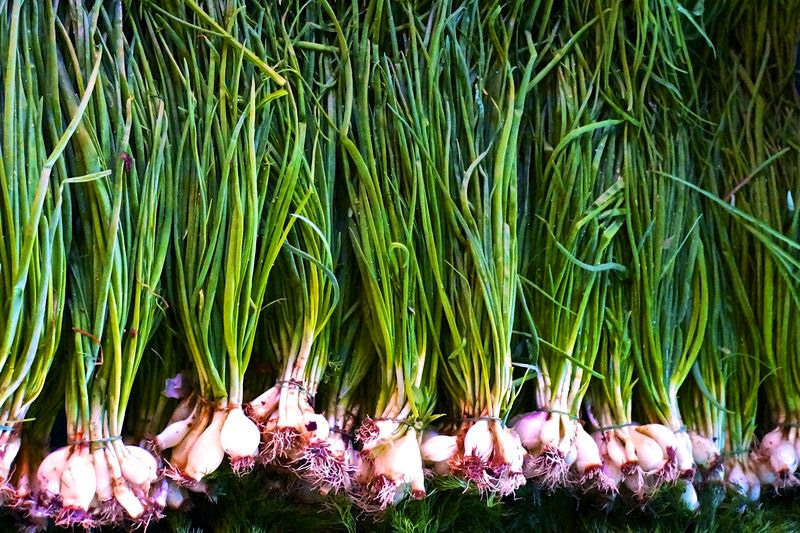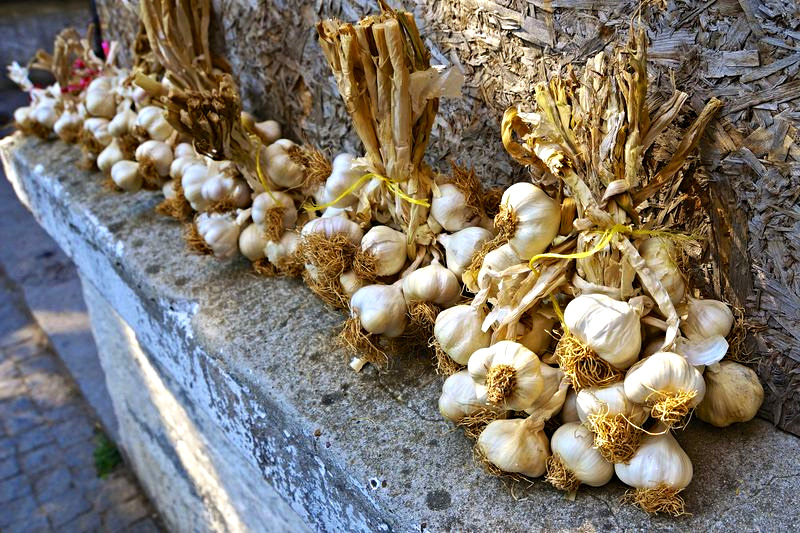
Most people are familiar with the concept of superfoods – those select ingredients that deliver a serious nutritional punch. Although the list is long, there are certain popular superfoods that always rise to the top: blueberries, almonds, kale, acai berries etc. Don’t get me wrong, these are all very nutritive foods and terrific additions to a healthy diet, but there are several under-the-radar superfoods that offer just as many nutrients, without the celebrity status.
The foods below are not the stars-of-the-show in most dishes, but they are easy to sneak into your diet by making some small changes to your everyday recipes.
Here are a few of my favorite sneaky superfoods:
Scallions
As our food is increasingly bred for larger yields and crop stability, nutritional content has suffered – plants that are easier to grow don’t need as many phytonutrients for protection and strength. Scallions are one of the few foods that haven’t changed significantly since they were growing in the wild. One recent study found that scallions have 140 times more phytonutrients than modern white onions. Just make sure you eat the green tops, as the stalks house the majority of the nutrients.
Ideas for eating more scallions – toss into green salads, sprinkle on grain/pasta dishes, blend into pesto or hummus, and use as a garnish for soups and stews.
Prunes
Most people only think of prunes as natural laxatives, eaten by old people and travelers dealing with constipation. While prunes can help regulate digestion (they are packed with both soluble and insoluble fiber), their benefits stretch way beyond stomach issues. Prunes may one of the healthiest snacks out there, packing more phytonutrients than many other dried fruits. In addition, prunes help build stronger bones thanks to high levels of boron that can speed bone development.
Ideas for eating more prunes – combine with almonds and dried apricots for an excellent trail-mix, keep a bag in your desk for snacking at work, cook chopped prunes in with oatmeal, or add to savory soups and stews with African spices.
Parsley
Bite-for-bite parsley has some of the highest phytonutrient levels of any greens. The problem is, most people only use it as a garnish, instead of elevating parsley to a key part of the meal. Among it’s many nutritious properties, parsley is a cancer fighter, containing Myristicin, a compound found to both inhibit tumor formation and neutralize carcinogens throughout the body, and luteolin, which is knows as an effective free-radical scavenger.
Ideas for eating more parsley – toss into green salads, sprinkle on grain/pasta dishes, blend into pesto and hummus, and use as a garnish for soups and stews. Here’s my recipe for Three Herb Pesto, which uses parsley, cilantro, and basil.
Cranberries
Cranberries need to break-out from the Thanksgiving rut. They are amazingly nutritive, and should be enjoyed year-round. Their bright red color comes from stellar levels of anthocyanins, putting them on par with acai berries. Cranberries have a long history of being used to treat and prevent bladder infections, but new research shows that they are also effective at fighting off food-borne bacteria, such as E.coli and listeria.
Ideas for eating more cranberries – add frozen cranberries to smoothies, bake into muffins/cakes/scones, add dried cranberries to trail-mix, cook dried or fresh cranberries in with oatmeal, sip on unsweetened 100% cranberry juice (add seltzer and/or orange juice to make a spritzer), toss dried cranberries into salads and grain dishes, add to granola, and use cranberry relish or jam. Here’s my recipe for Maple Orange Cranberry Sauce, which can be used year-round as a condiment or oatmeal topping.
Garlic
Garlic is a powerful immune-stimulant, sometimes called “nature’s antibiotic.” It is an effective first line of defense against colds and flus – either as prevention, or once you’ve started to sniffle. Garlic is also good for the heart, helping reduce blood pressure and cholesterol levels. Finally, it is loaded with antioxidants that are particularly effective inhibitors to tumor growth. Interestingly, the antioxidant levels rise dramatically if you let your garlic rest for ten minutes after chopping, but before cooking. I talk more about the immune-boosting properties of garlic in my Eating for Immunity post.
Ideas for eating more garlic – add lots of fresh garlic to salad dressings and marinades, blend into pesto and hummus, add extra garlic to roasted and sautéed veggies, roast a whole head and spread on toast, and snack on pickled garlic.

Leave a Reply